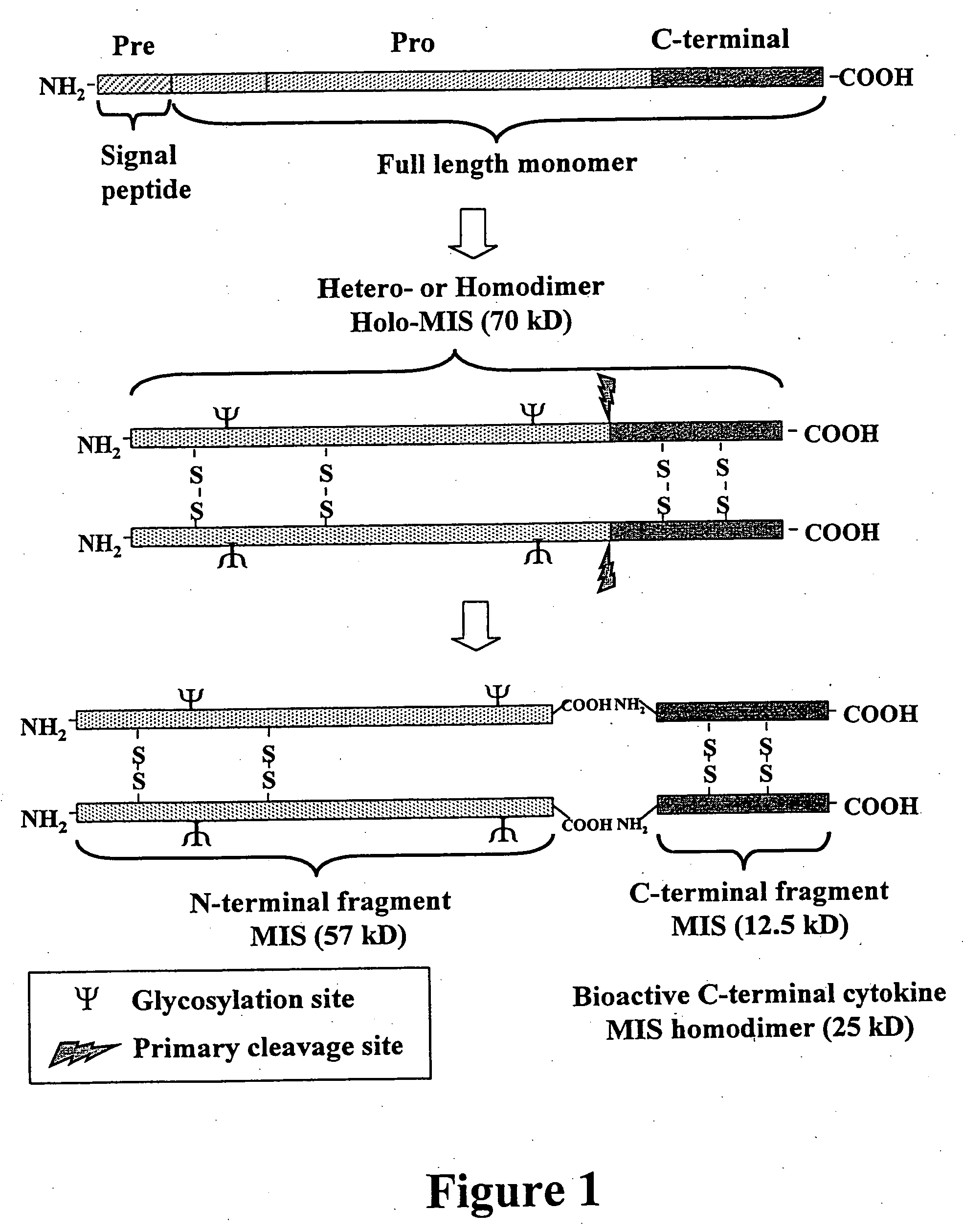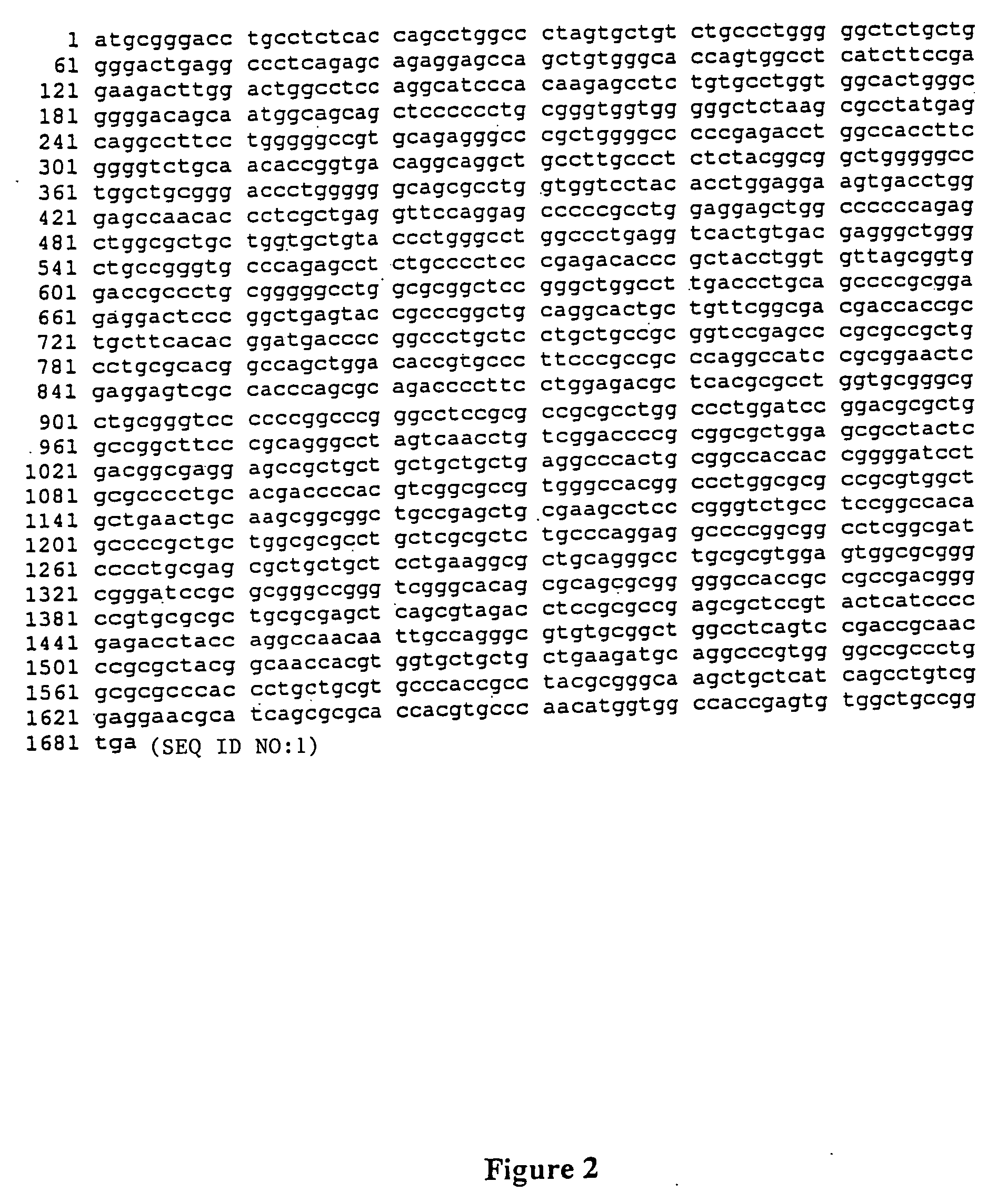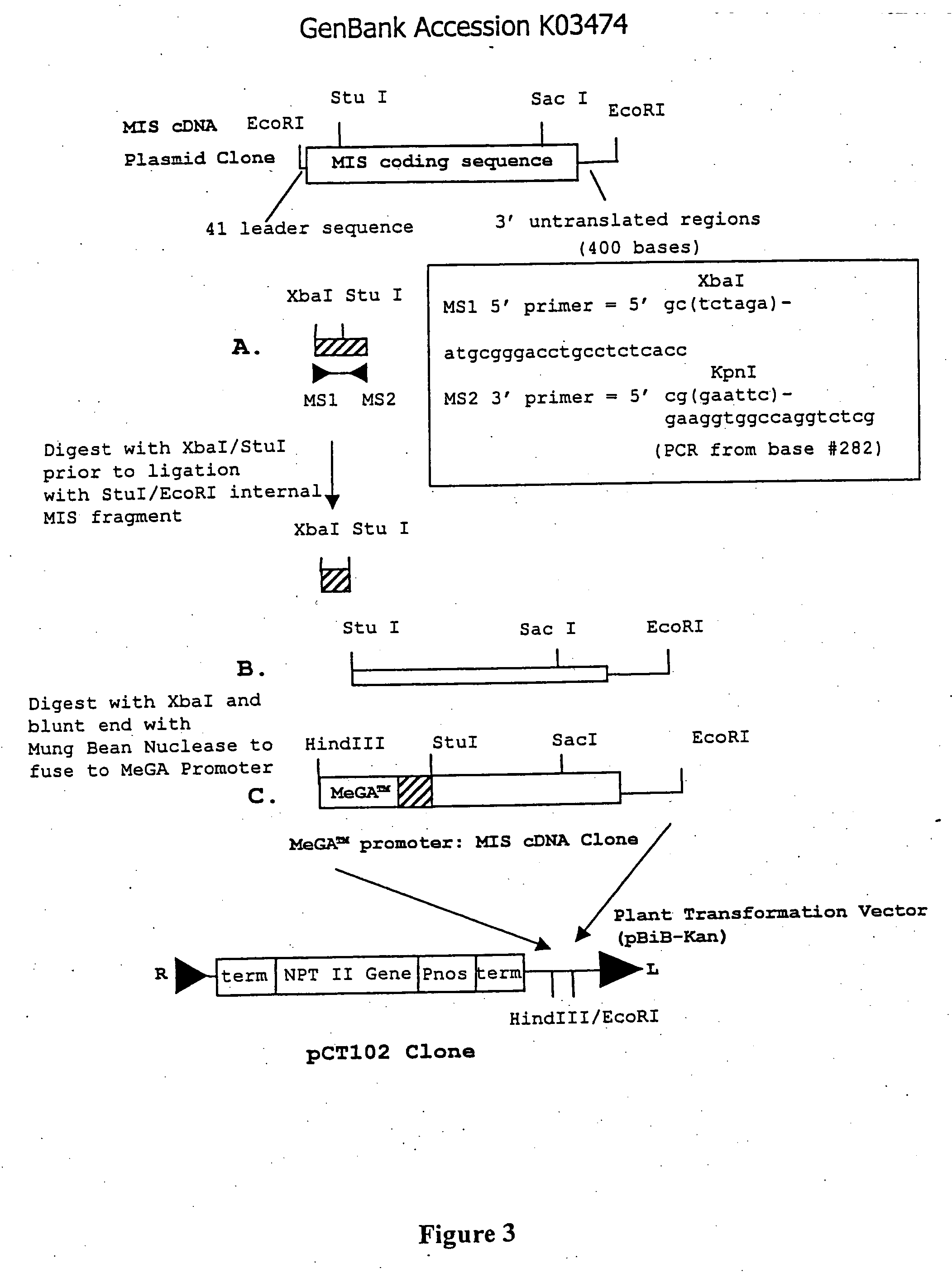Gene expression and production of TGF-beta proteins including bioactive mullerian inhibiting substance from plants
a technology of plant-specific glycans and gene expression, which is applied in the field of gene expression and production of plant-specific glycans, can solve the problems of host disadvantage, inability to provide mis at the level required for clinical trials or commercial applications, and inability to produce sufficient quantities of holo-mis precursors, etc., and achieve the effect of reducing or eliminating the presence of plant-specific glycans
- Summary
- Abstract
- Description
- Claims
- Application Information
AI Technical Summary
Benefits of technology
Problems solved by technology
Method used
Image
Examples
example 1
Production of holo-hMIS in Transgenic Tobacco Plants
Construction of a Vector for Expression of Holo-hMIS in Transgenic Tobacco Plants
[0130] The coding region of the full-length MIS was derived from a cDNA clone of human MIS with the sequence described in GenBank Accession #K03474 (FIG. 2). The MIS cDNA sequence was present as a 2.0 kb EcoRI fragment in pBluescript II (KS) (pBS II; Stratagene). The general cloning strategy is illustrated in FIG. 3. In order to eliminate unwanted 5′ leader sequences and provide a flanking XbaI site, the first 282 bp of the full-length MIS coding region was PCR amplified using MS1 and MS2 primers (FIG. 3). The PCR product was digested with XbaI and StuI and ligated to the full-length MIS vector digested with StuI. The ligation product was digested with XbaI and EcoRI and the 2.0 kb fragment was cloned into pBS II vector. A plasmid containing the wound-inducible MeGA™ promoter was digested with EcoRI and the ends were blunted with Mung Bean Nuclease....
example 2
Production of Bioactive C-Terminal hMIS in Transgenic Tobacco Plants
Construction of a Vector for Expression of C-Terminal hMIS in Transgenic Tobacco Plants
[0136] The MIS bioactive peptide is produced by a furin-like cleavage between amino acids ARG427 and SER428 of the mature holo-MIS precursor. The resulting 25 kD homo-dimer, C-terminal MIS, is the bioactive protein recognized by the MIS receptor protein. The natural bioactive C-terminal MIS is unglycosylated, obviating any need to modify plant-specific glycosylation to produce a human equivalent molecule. In order to produce the C-terminal MIS directly, it was necessary to provide a start codon and sequences encoding an in-frame signal peptide to direct the C-terminal MIS product into the endomembrane system for dimerization and secretion. To generate constructs for expression of the C-terminal bioactive MIS fragment in plants, the cDNA region encoding the C-terminus of human MIS [GenBank Accession #K03474 (FIG. 2)] was PCR-amp...
PUM
| Property | Measurement | Unit |
|---|---|---|
| Length | aaaaa | aaaaa |
| Cell angle | aaaaa | aaaaa |
| Bioactive | aaaaa | aaaaa |
Abstract
Description
Claims
Application Information
 Login to View More
Login to View More - R&D
- Intellectual Property
- Life Sciences
- Materials
- Tech Scout
- Unparalleled Data Quality
- Higher Quality Content
- 60% Fewer Hallucinations
Browse by: Latest US Patents, China's latest patents, Technical Efficacy Thesaurus, Application Domain, Technology Topic, Popular Technical Reports.
© 2025 PatSnap. All rights reserved.Legal|Privacy policy|Modern Slavery Act Transparency Statement|Sitemap|About US| Contact US: help@patsnap.com



